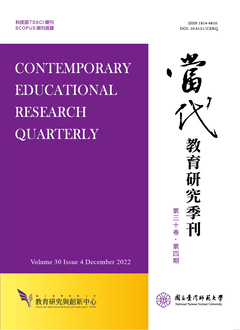

Purpose
In many STEM fields, the intersectionality of gender and excellence is a frequently noted phenomenon, i.e., women are underrepresented in STEM in general and specifically, at the top. Role models presumably play a key part in closing this equity gap. However, these are not available in sufficient numbers. Many researchers have suggested better outreach to female talents by integrating the arts into STEAM. One possibility might be that such an integration would make more female role models available to STEAM talent pools. (82)
Design/methodology/approach
We explored the availability of potential role models for female talents by analysing the ten most prestigious awards in STEM and the arts over the past 42-plus years using a 2 X 2 X 2 X 10 hierarchical log-linear analysis. Variables were gender (female vs. male), award type (STEM or arts), award (ten different awards per award type), and time period (1980–2000 vs 2001–2021). Three research questions were investigated: (1) whether and to what extent gender gaps exist in Nobel Prizes and prizes known as the Nobel, or the highest honors of a field in STEM and in the arts, (2) whether gender gaps in Nobel Prizes and prizes known as the Nobel or the highest honors are equally distributed across individual STEM fields and across the individual arts domains, and (3) what trends emerge in the recipient pool of Nobel Prize winners and winners of prizes known as the Nobel or the highest honors.(156)
Findings/results
First, women do receive substantially fewer of the top awards, with a slightly larger gender gap in STEM than in the arts. Second, findings showed large differences in the probabilities with which each STEM or arts prize was awarded to women. Thus, differences emerge not only between STEM and the arts, but also within STEM and arts awards. Third, there were comparable significant increases in awards to women in both STEM and the arts after the turn of the millennium.
Originality/value
The prizes explored in this study were awarded between 1980 and 2021. Future researchers should explore whether the gains made at the turn of the millennium for female talent pools have or are in the process of calcifying as of the publication date of this article. While the researchers of this study did not focus on the nomination pool, a cursory look at 100 years of Academy Award nominations reveals that female talent was not being considered, and thus could not be awarded. Does this extend to the nomination pools of other eminence prizes? Additionally, there are still far too few non-stereotypical, female role models at the top tiers of arts domains that might “inoculate” against the male STEM stereotype. If the introduction of male talent into female gender-typed work or ‘women’s work’ produces ever more eminence prizes for male talent, then a question of quality control has been raised and should be leveraged against talent pools, particularly in the STEM/STEAM domains where male talent dominates.
Implications for policy/practice
Introducing arts into STEM is not enough to bridge the achievement gender gap. Future studies might focus on whether eminence prizes are appropriate end-points of career development, particularly in the context of female talent development in STEM/STEAM fields. Moreover, this paper discussed the effect of gender concurrence and eminence prizes: the effect of female role models on women. However, this effect can also extend to male talent pools. Future research on the effects of successful female role models in STEAM should therefore include effects on boys.

本著作係採用創用 CC 姓名標示-非商業性 3.0 台灣 授權條款授權.
本刊國立台灣師範大學教育研究與創新中心
106台北市和平東路一段162號 | 電話: 02-7749-3670 | E-mail: cerecerq@gmail.com
教創中心 | 師大 | 電子報 | 線上投審系統
本刊由國家科學及技術委員會人文社會科學研究中心補助經費
© 2014 CERI-NTNU
